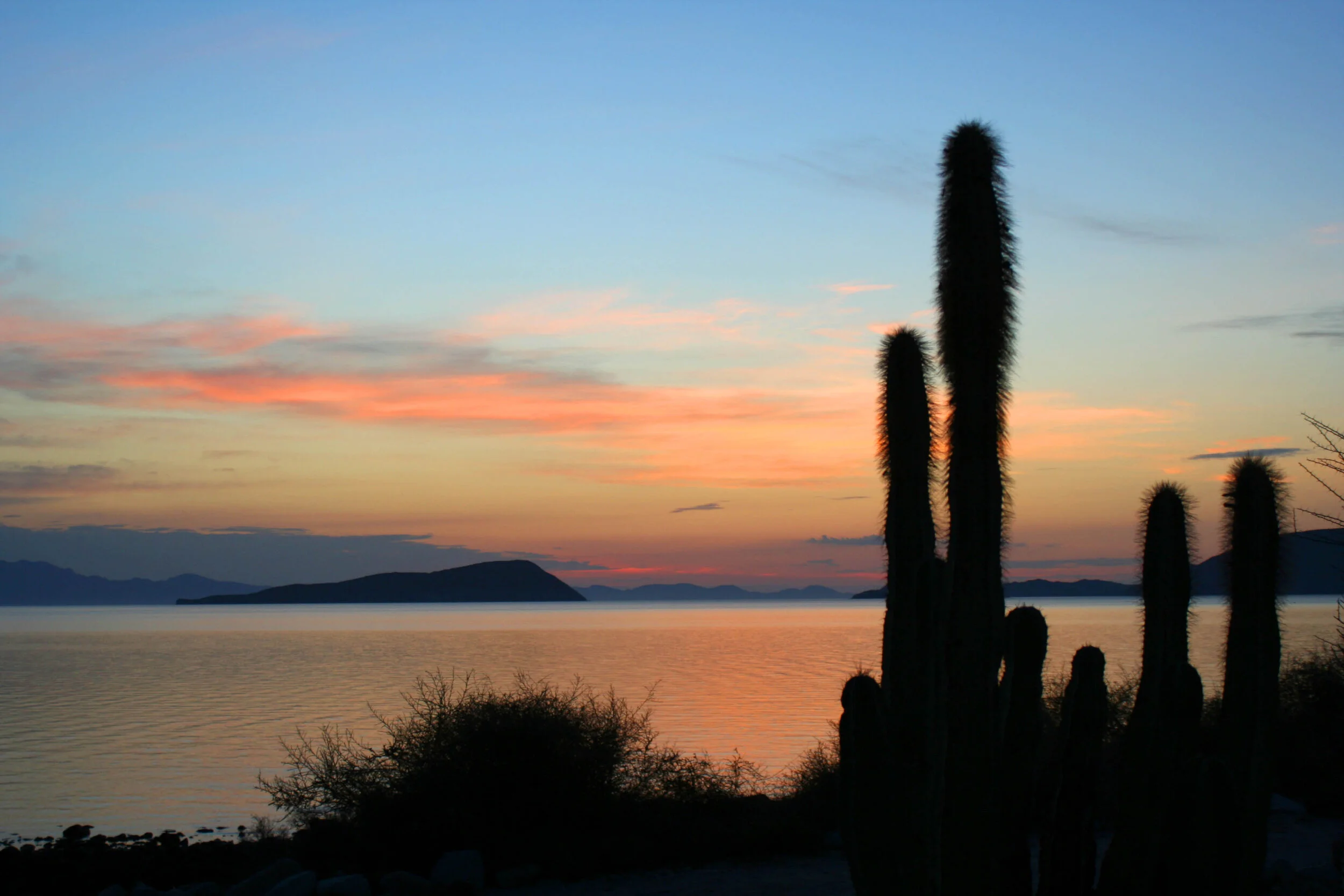Mulege to Loreto
JT and I found a nice little beach next to a small community of gringo homes just 8 or so miles south of town to spend the night. As usual, last night was a bit chilly and as soon as the sun came up we were warm and ready to get moving. I had some time to blog, drink coffee, and relax as JT came to life in his sleeping bag. I love the Sea of Cortez and the Bay of Conception. Peaceful and embracing.
With the last of the filming needed for Mulege, we drove into town to secure the last glimpse of this spectacular and inviting pueblo. JT struck off by himself, so as to be unencumbered by my "tagging along.” This was an agreement we came to a while ago and it works well...I think!
While in the plaza and catching up on my blogging, I kept noticing and saying hi to an American couple that was walking about. They looked lost and after the 6th or so lap, I asked if they needed any help. They were looking for their lost friend and hadn’t seen her since last night at midnight. They were worried and were heading to the police department.
I finished my work and JT arrived when I noticed the "lost friend" walking down the street, fitting the couple’s description. As it turns out, she was never "lost" and her friends just mistook her actions (getting up early to go for a walk and to get breakfast). We all had a chuckle.
After driving around trying to find the road to the prison museum, we passed the fire station. The firefighter outside the station was wearing a T-shirt that read "Branciforte Fire District" so I slammed on the brakes to stop and talk with him. I gave him one of my patches and told him that his shirt came from my hometown. His English was not good, my Spanish is terrible, and I don't know if he understood me. Regardless, it reminds me how small the world can be!
The Mulege Prison was completed in 1909 and was in operation until 1974. Interestingly, it was the only prison in Baja that was built with no bars. The prisoners were free to go to work every day, but had to return at 6pm. If a prisoner did not return, the others would go and find him.
Our original plan was to head over to San Isidro and not come into Loreto. Nelson and Goldman skipped Loreto completely so as to spend time on the Pacific side of Baja. We wanted to visit the Mission San Javier that resides west of Loreto and in the Sierra La Giganta in a beautiful oasis valley.
The Hostel Casas Loreto opened up their doors to us and we decided to stay two nights. Parking was not an issue as Abel (our host) told us to park the bikes inside...next to our room.










